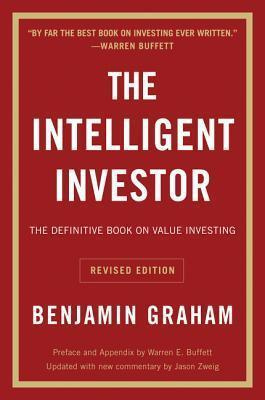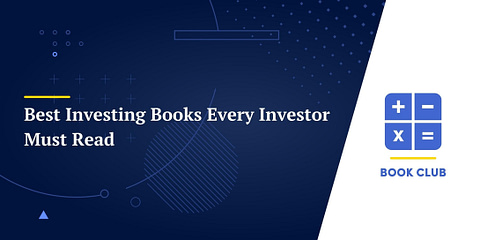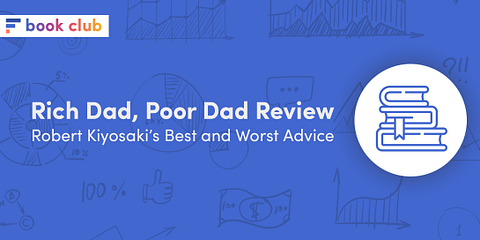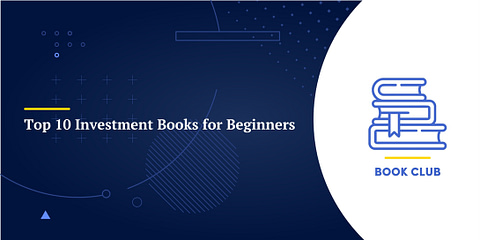Renowned as a foundational text in value investing, The Intelligent Investor by Benjamin Graham has profoundly influenced famous investors like Warren Buffett and Peter Lynch.
This review will not only explore the book’s timeless principles and critically examine its relevance in today’s rapidly evolving investment landscape. Is a guide from 1949 still pertinent for today’s investors?
Let’s find out.

Is The Intelligent Investor’s Reputation Deserved?
Short answer? Yes!
This book was one of the first investing manuals to be written by a legendary investor like Graham, with a focus on advising retail investors. This made it a foundation stone for future educational material on investing.
While the language can be a bit dated at times, the book remains fairly easy to read. Its ideas and concept are timeless, still as relevant today as in the 50s. Modern editions also include commentaries to keep the book relevant (more on that at the end of this article).
The book is well written and organized and represents a great first book to read about investing. It teaches beginners to have realistic goals and to manage risk properly, which should be the first things they learn about.
Key Idea #1: Mr. Market’s Moods
Graham uses the allegory of Mr. Market to represent the investing world at large. Some days, Mr. Market is overly optimistic and overvalues some stocks. Some days, he is depressed and undervalues them.
The main task of the intelligent investor is to not follow Mr. Market’s moods. He should sell to Mr. Market when he is optimistic, and buy from him when he is depressed.
Because Mr. Market’s moods might take a while to change, this can put a strain on investors’ minds. So a very important skill is to learn to stay calm and focus on fundamentals instead of share prices.
The big money is not in the buying and selling … but in the waiting.
Charlie Munger
Key Idea #2: Investor vs Speculator
Graham’s central investing concept is to buy stocks sold by Mr. Market below their “real” value, determined by the business fundamentals. He differentiates the investor from the speculator.
- Investors are in for the long run and are buying a part of a real business. Their profits will come from the success or failure of that business.
- Speculators buy things expecting to sell them later at a higher price to other speculators. Speculators do not care about the underlying business, only the stock price.
Graham recommends strongly being an investor and not a speculator, as most speculators end up losing money.
Not making mistakes is more important than making good decisions.
It is remarkable how much long-term advantage people like us have gotten by trying to be consistently not stupid, instead of trying to be very intelligent.
Charlie Munger
Key Idea #3: Margin of Safety
Graham’s fundamental thesis is that investors should buy a business below its “real” value to make money. Because determining that value is half art, half science, an error is always possible. So any purchase should be made significantly below the “real” value.
This “margin of safety“ provides protection when the valuation was calculated wrong, or something unexpected happens. The riskier the investment, the more margin of safety is needed.
Together with an investor’s focus on the business fundamentals, this should provide investors with more consistent and safer returns.
Key Idea #4: Defensive vs Enterprising Investors?
Graham thinks most investors are not mentally equipped to handle the pressure of an aggressive investing style.
He calls these investors defensive investors. So he recommends they must accept lower returns and focus on safer investments. This includes high-quality bonds and only stocks of stable and large companies. This is similar to today’s common recommendation to the bulk of investors to stick to passive investing.
Enterprising investors are the ones with the mindset, skills, and dedication required to obtain higher returns. They must be ready to spend a lot of time analyzing businesses and learning about investing.
Today, we would call them “active investors”.
Is The Intelligent Investor Graham’s Best Book?
I often recommend The Intelligent Investor as the first book a beginning investor should read. This is for two reasons.
- The first one is simply that the book is good, and Graham’s a great teacher. It goes back again and again on risk management and the type of investment you should NOT get involved with. This is such a crucial thing for investing success that it makes sense to learn it early.
- The second one is that the book is a test. If you found that The Intelligent Investor was a boring, tedious read, that’s okay. It’s also a sign that you should stick to passive investing.
This is because becoming a good active investor or stock picker requires a lot of reading and learning. It really only works if you find the topic interesting. In that respect, I personally think the best Graham book is “Security Analysis“.
But this is a much longer book, and it is genuinely hard to read. So “The Intelligent Investor” is the best book for casual investors, and “Security Analysis” is the next step if you want to go deeper.
How to Read The Intelligent Investor?
Because the book is so rich, I recommend reading it at least once to every investor, even passive investors.
For more seasoned investors, I would recommend a regular re-read. As you gain experience, some chapters will take on a new meaning, echoing their past and current investing strategy.
You can also do a more strategic partial reread. For example, the chapter on inflation is relevant today but was not so much in the 2010s.
Which Edition Should I read?
I would recommend the 2006 Edition published by Harper Business. It is based on the 1973 version updated by Graham 3 years before his death, with added commentaries for each chapter by the Wall Street Journal Columnist Jason Zweig. It also contains a preface and appendix by Warren Buffett.
I recommend owning the paper version, as this is a book best read slowly, in a calm environment, so you have time to reflect on how Graham’s advice can apply to your situation.
The commentaries add a lot of value, as they update the companies with more modern examples, like the dot-com bubble instead of companies famous in the 1950s and 1960s. Zweig is also a great market commentator and investor in his own right and explains well the more difficult sections of each chapter.
Conclusion
The Intelligent Investor is rightfully ranked in the top 5 or top 10 books ever written about investing. It encompasses a large range of topics, is very didactic, and is easy to read. It provides retail and beginner investors with the basics they need to succeed.
Because it focuses on timeless and essential advice, it is equally useful to experienced investors. Some famous investors even claim to re-read it every year. Together with Security Analysis, the other Graham masterwork, The Intelligent Investor most likely can help boost the returns of any investors.











